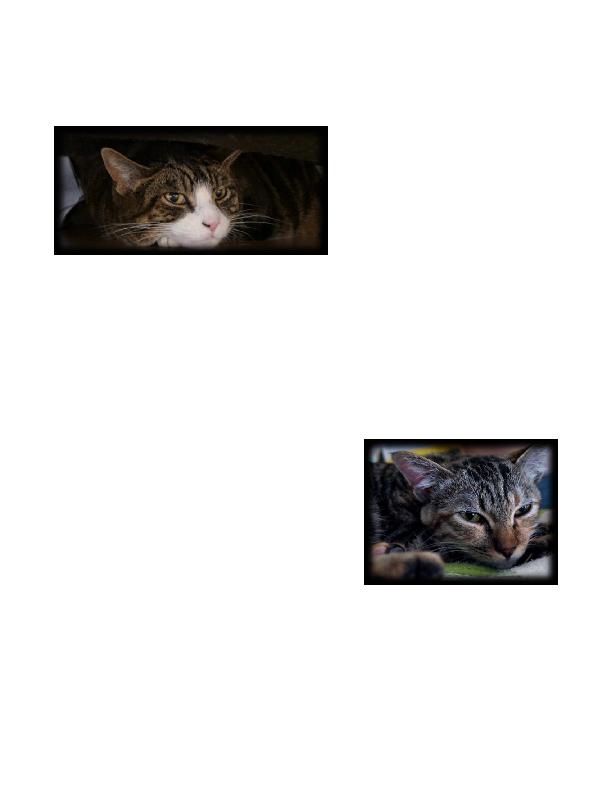
hide suffering, so be on the
lookout for these subtle signs.
around being unable to tell how much pain my beloved friends were suffering. Even
though I know cats are very good at disguising their pain, I can't help but guilt-trip myself
sometimes over this health issue, because as a person who's lived with cats almost all my
life, I "should" be able to notice when something's out of whack. A sick cat will show
"symptoms," although often they're quite subtle. In hopes of helping you recognize signs
of pain that eluded me, here are some tips regarding things to look out for.
day sleeping, this could be a sign that she's
hurting. Likewise, if a cat becomes grumpy, it's not
because she's "just getting old." I learned this the
hard way when, after Siouxsie had four painful
teeth extracted, her whole disposition changed.
Normally sedate cats can become really hyper and
agitated as a result of pain, too.
that's a sign something is bothering him.
is more arthritic than the right one, and I suspect it's more comfortable for her to
sleep on the right side for this reason.